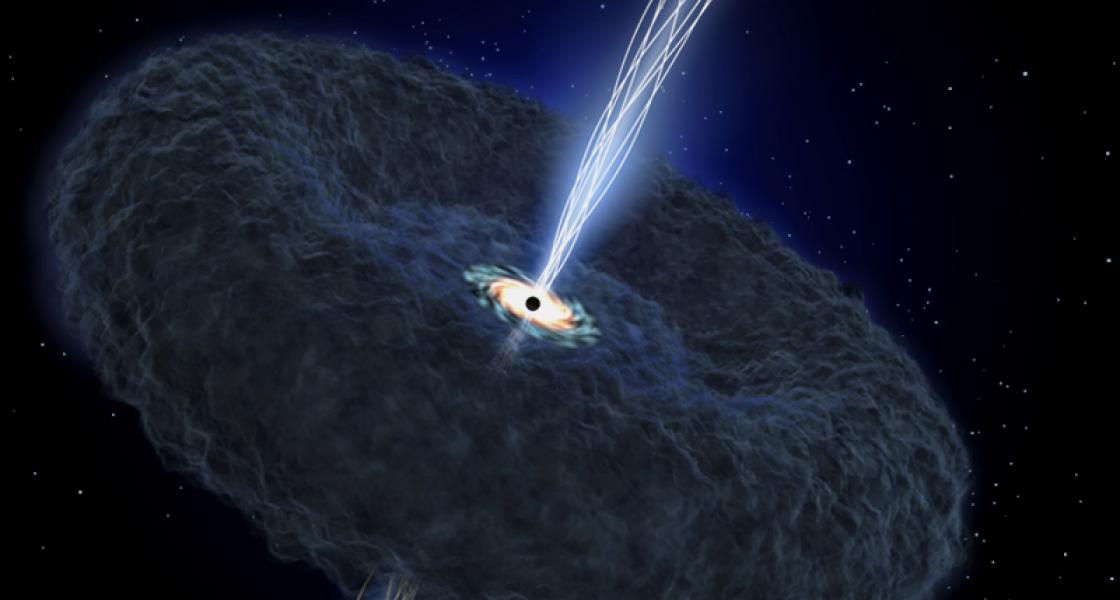Fellow Mitch Begelman’s new theory says it’s possible to form stars while a supermassive black hole consumes massive amounts of stellar debris and other interstellar matter. What’s more, there’s evidence that this is exactly what happened around the black hole at the center of the Milky Way some 4–6 million years ago, according to Associate Fellow Ann-Marie Madigan.
Relatively recently on the cosmic scale of things, the sleeping giant at the center of our Galaxy roared to life as an active galactic nucleus (AGN),1 swallowing enough matter to increase its size by more than 10% and creating a necklace of new stars around its equator.
“You can form some stars along the equator of the black hole’s thick inner disk, but most of the matter flows into the black hole from above and below the equator,” Begelman explained. “It works this way because we now know that magnetic fields can expand vertically and puff up the disk.2 This process allows the matter above and below the inner disk to feed the black hole.”
In this scenario, the upper and lower parts of the “accretion disk” look like wedges that expand vertically from the inner disk at angles of approximately 50 degrees. The whole structure looks like a doughnut without an outer edge that extends outwards a million times the radius of the black hole. The huge amount of gas in these regions flows into the black hole at the same time stars are forming around the equator.
“What we didn’t understand was that a black hole that was forming stars could also accrete,” Begelman said. “Now we understand for the first time that you can have your stars and eat them, too.” Begelman clarified that black holes don’t actually eat the stars, but rather the gas left over from making stars.
Interestingly, the black hole at the center of our Milky Way Galaxy may have been an AGN 4–6 million years ago. The smoking gun is a necklace of stars around our own, now rather sedate black hole. The disk of stars is located exactly where Begelman’s new model predicted it would be.
“With our new model, we can say how bright that AGN would have been,” Begelman said. “Right now the center of the Milky Way has a luminosity of about 100 Suns, but a few million years ago when it was an AGN, it would have been as bright as a billion Suns.” Begelman added that about 1% of the mass of the central black hole was turned into stars during that episode. At the same time, the black hole grew about 10%. In other words, the beautiful necklace of stars we see today is just the leftover crumbs from the most recent feeding frenzy of our Galaxy’s central black hole.
Begelman collaborated on this work with his colleague Joseph Silk of the Institut d’Astrophysique de Paris, Université Pierre et Marie Curie. ––Julie Phillips
1AGN’s are some of the most luminous sources of electromagnetic radiation in the Universe. The most luminous and energetic of the AGNs are the quasars.




